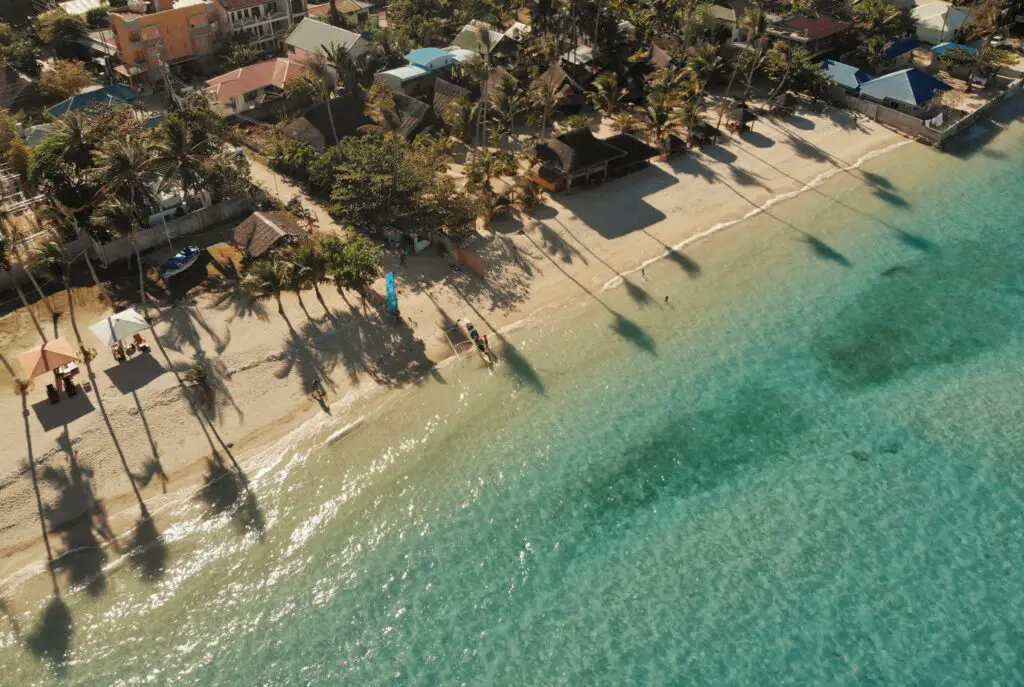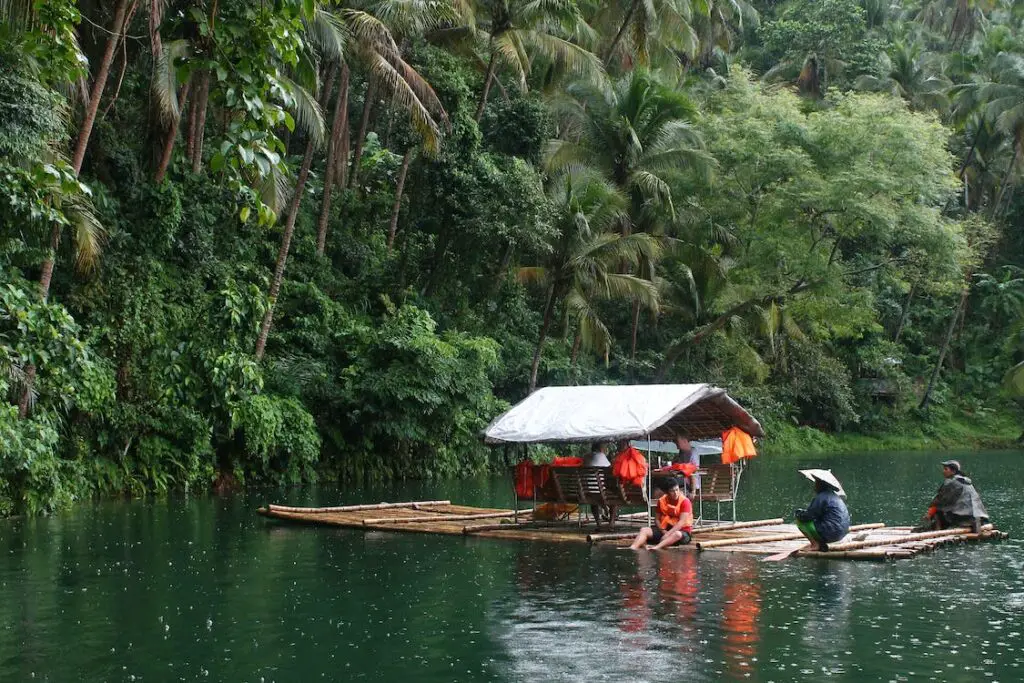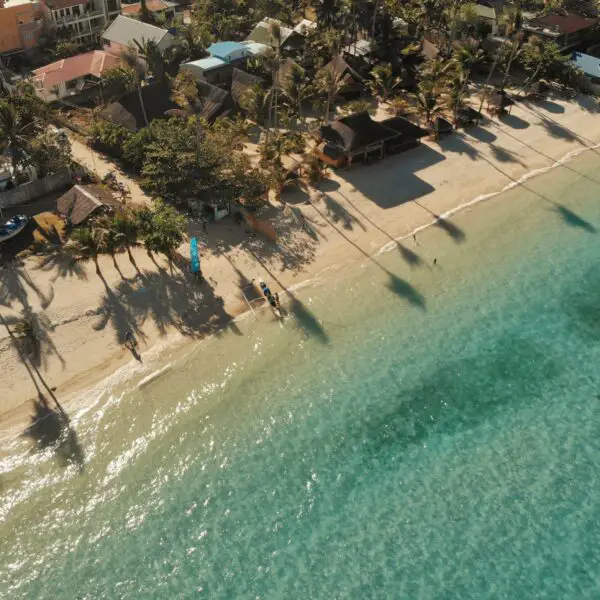Introduction
The Philippines, with its stunning natural beauty and vibrant cultural heritage, has long been regarded as a tropical paradise. Nestled in Southeast Asia, this archipelago boasts crystal-clear turquoise waters, pristine white sand beaches, lush rainforests teeming with biodiversity, and awe-inspiring landscapes that have captivated the hearts of countless travelers. Whether you seek adventure or relaxation, the Philippines offers a myriad of experiences that are sure to leave an indelible mark on your soul.
Brief Overview of the Philippines as a Tropical Paradise
The Philippines is composed of 7,641 islands spread across three major geographical regions: Luzon in the north, Visayas in the center, and Mindanao in the south. Each region has its own unique charm and attractions that appeal to diverse interests.
In Luzon, you will find metropolitan Manila bustling with energy and historical sites such as Intramuros and Fort Santiago. The iconic Banaue Rice Terraces in Ifugao showcase centuries-old agricultural engineering marvels carved into mountainsides.
The stunning beaches of Batangas and Zambales offer a quick escape from city life. The Visayas region is renowned for its picture-perfect islands like Boracay with its powdery white sands and vibrant nightlife.
Cebu offers both city sophistication and breathtaking natural wonders like Kawasan Falls or swimming with gentle giants in Oslob. Bohol mesmerizes visitors with its Chocolate Hills and adorable tarsiers.
Mindanao entices adventurers with majestic mountains like Mount Apo or enchanting hidden waterfalls like Aliwagwag Falls. Dive into vibrant marine sanctuaries around Siargao Island or explore ancient traditions within indigenous communities throughout the region.
Importance of Considering Weather When Planning a Trip
When planning a trip to the Philippines, it is crucial to consider the weather as it can significantly impact your experience. The country’s tropical monsoon climate brings alternating dry and wet seasons, each offering distinct characteristics that influence outdoor activities, travel conditions, and overall enjoyment.
By understanding the weather patterns during different times of the year, travelers can make informed decisions and maximize their time in this enchanting destination. While adventure seekers may prefer certain weather conditions for specific activities like hiking or surfing, beach lovers might prioritize clear skies and calm seas.
The Best Time to Visit the Philippines for Good Weather
The best time to visit the Philippines for good weather depends on various factors including the region you plan to explore and your desired activities. Each season offers its own advantages and disadvantages that should be taken into account when planning your trip.
This article will delve into the nuances of these seasons across different regions of the country. Whether you dream of lounging on palm-fringed beaches or embarking on exhilarating adventures amidst lush landscapes, we will guide you through choosing the optimal time to ensure optimal weather conditions during your Philippine escapade.
The Philippines’ location and its impact on climate
Located in Southeast Asia, the Philippines is an archipelago consisting of over 7,000 islands. Its unique geographical position greatly influences its climate.
Situated along the typhoon belt and the Pacific Ring of Fire, the country experiences a tropical climate characterized by high humidity and abundant rainfall. The presence of warm ocean currents, such as the Philippine Sea and the Pacific Ocean, contributes to the tropical nature of the Philippines’ climate.
These currents bring in warm air masses that significantly affect temperature and precipitation patterns throughout the year. The country’s proximity to the equator means that it receives ample sunlight throughout most parts of the year.
Tropical monsoon climate and its characteristics
The Philippines is classified as having a tropical monsoon climate, which is characterized by distinct wet and dry seasons. This type of climate is common in many Southeast Asian countries due to their geographical proximity to large bodies of water.
During the wet season, which typically starts in May and lasts until October, much of the country experiences heavy rainfall due to monsoon winds coming from different directions. The southwest monsoon or “Habagat” brings moisture-laden air from over warm waters towards Western Luzon and Visayas regions.
On the other hand, from November to April, a different set of winds known as northeast monsoons or “Amihan” prevails. These cooler and drier winds blow across the Luzon region coming from Siberia or Mainland China.
In contrast, during the dry season that spans from November to April for most parts of the country, rainfall decreases significantly as cooler winds replace moist air masses from over adjacent waters limiting cloud formation. This results in clear skies allowing ample sunshine throughout most regions.
Two distinct seasons: Dry season and Wet season
The Philippines experiences two distinct seasons: the dry season and the wet season. These seasons offer contrasting weather conditions that can significantly impact travelers’ experiences.
1. Dry Season (November to April)
Overview of the dry season’s weather patterns across different regions
The dry season in the Philippines, which typically spans from November to April, is characterized by a pleasant climate and minimal rainfall. However, it is important to note that the weather can vary slightly across different regions of the country. Understanding these variations can help travelers plan their itineraries more effectively.
Luzon region: cool and pleasant temperatures, minimal rainfall
In Luzon, the largest island in the Philippines, visitors can expect calm and pleasant temperatures during the dry season. The average temperature ranges from 22°C (72°F) to 32°C (90°F), creating a comfortable environment for exploration.
Rainfall is relatively low during this time, making it an ideal period for outdoor activities such as hiking or sightseeing without worrying about sudden downpours. Popular destinations in Luzon like Manila, Batangas, or Banaue Rice Terraces are at their best during this period.
Visayas region: warm temperatures, low humidity, minimal rainfall
The Visayas region experiences warm temperatures throughout the dry season with an average ranging between 25°C (77°F) and 32°C (90°F). The humidity levels are generally lower compared to other times of the year, providing visitors with a more comfortable climate for exploration.
Rainfall is also limited during this period in the Visayas, allowing travelers to enjoy outdoor activities such as beach hopping or island hopping without frequent interruptions. Destinations like Cebu City and Bohol offer pristine beaches and clear turquoise waters that are perfect for water enthusiasts during this time.
Mindanao region: warm temperatures, occasional rain showers in some areas
In Mindanao, one can expect warm temperatures ranging from 24°C (75°F) to 33°C (91°F) during the dry season. While most areas in Mindanao experience minimal rainfall, some regions may encounter occasional rain showers.
However, these showers are usually short-lived and do not significantly impact travel plans. Mindanao offers a diverse range of attractions, such as the stunning beaches of Siargao or the majestic Mount Apo, making it an excellent destination for nature lovers and adventure seekers during this period.

Advantages of visiting during the dry season:
Ideal for beach lovers and water activities due to the calm seas and clear skies.
The dry season in the Philippines presents a perfect opportunity for beach lovers to indulge in their passion. With calm seas and clear skies, visitors can enjoy various water activities such as snorkeling, scuba diving, surfing, or simply lounging on powdery white sand beaches. Renowned beach destinations like Boracay, Palawan’s El Nido, or Coron shine brightest under the sun during this time.
Perfect time for exploring outdoor attractions like rice terraces or hiking trails.
For those seeking cultural immersion or outdoor adventures, the dry season provides an ideal climate for exploring attractions like rice terraces or embarking on hiking trails. The crisp weather allows hikers to traverse paths with ease without worrying about muddy terrains caused by rain. Banaue Rice Terraces in Luzon and Batad Rice Terraces in Ifugao Province offer awe-inspiring landscapes that are best enjoyed when bathed in sunlight.
Festivals like Sinulog in Cebu or Panagbenga in Baguio are held during this period.
The dry season is also synonymous with vibrant festivals across different parts of the country. The sinulog festival held annually in Cebu City celebrates Filipino culture through colorful parades and street dances. Likewise, the Panagbenga festival in Baguio City showcases the beauty of blooming flowers with street parades and floats.
Visiting during this period allows travelers to immerse themselves in these lively cultural celebrations. The dry season from November to April is undoubtedly an excellent time to visit the Philippines for favorable weather conditions.
Whether you are a beach lover, an outdoor enthusiast, or someone who appreciates cultural festivities, this period offers ideal circumstances for exploring the beauty and diversity that the Philippines has to offer. By planning your trip during this season and understanding the weather patterns across different regions, you can maximize your experience and make unforgettable memories in this tropical paradise.
2. Wet Season (May to October)
Overview of wet season’s weather patterns across different regions:
The wet season in the Philippines, spanning from May to October, brings about changes in weather patterns across the country.
In the Luzon region, frequent rain showers become the norm during this time, with occasional typhoons affecting the northern areas.
Moving to the Visayas region, moderate to heavy rainfall occurs throughout this season, and eastern parts are occasionally affected by typhoons.
As for Mindanao, its weather during the wet season exhibits irregular rainfall patterns, with some areas experiencing heavy downpours while others may see intermittent showers.

The Disadvantages of Visiting During Wet Season:
While visiting the Philippines during the wet season may not be everyone’s cup of tea, it does have its downsides. First and foremost is the increased precipitation that can disrupt outdoor activities and sightseeing plans.
Heavy rains can result in flooded roads and make exploring certain areas difficult or even unsafe. Additionally, unpredictable weather conditions may lead to flight cancellations or delays if you plan on traveling between different islands in the country.
Another aspect to consider is that some popular tourist destinations might be temporarily closed or operate on limited schedules during typhoon warnings or severe rainstorms. This can be disappointing for travelers who had specific landmarks or attractions on their itinerary.
Moreover, high levels of humidity combined with rain can create discomfort for those unaccustomed to such conditions. Furthermore, wildlife enthusiasts should note that adverse weather conditions can affect marine activities such as snorkeling or diving due to reduced water visibility and choppy seas caused by storm systems passing through.
In spite of these drawbacks, it’s important not to dismiss visiting during this season entirely as there are still enjoyable aspects worth considering: fewer crowds, cheaper accommodation rates, and lush green landscapes that thrive under the nourishment of rain. By planning accordingly and staying updated on weather forecasts, it is possible to have a fantastic experience even during the wet season in the Philippines.
Conclusion
When deciding on the best time to visit the Philippines for good weather, it’s crucial to consider both the dry and wet seasons. The dry season offers ideal conditions for beachgoers, outdoor adventurers, and those interested in experiencing vibrant local festivals. On the other hand, the wet season provides a unique opportunity to witness nature’s rejuvenation while taking advantage of lower tourist volumes and potentially reduced costs.
While the wet season has its inconveniences such as increased rainfall and occasional typhoons that may affect travel plans or restrict certain activities, with proper planning and flexibility, visitors can still make the most of their trip by exploring indoor attractions or focusing on destinations less likely to be impacted by weather disturbances. Ultimately, every season holds its own allure in this tropical paradise.
Whether you chase sunny skies or embrace raindrops falling on your umbrella-clad journey through breathtaking landscapes, there is beauty to be found throughout the year in the Philippines. So pack your bags with optimism and embark upon an adventure amidst vibrant cultures, stunning beaches, and warm Filipino hospitality.
